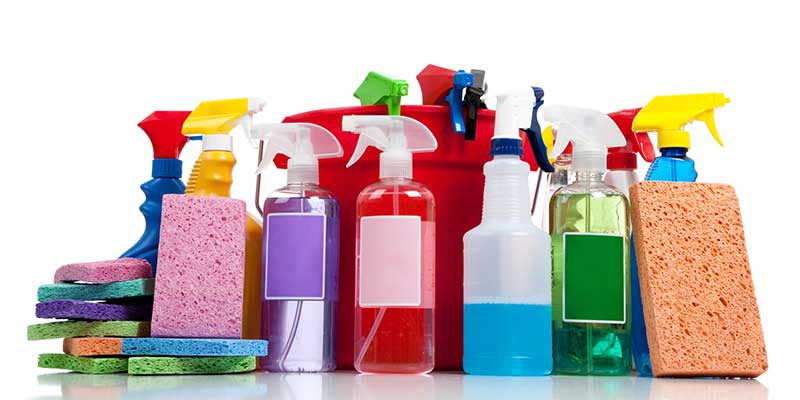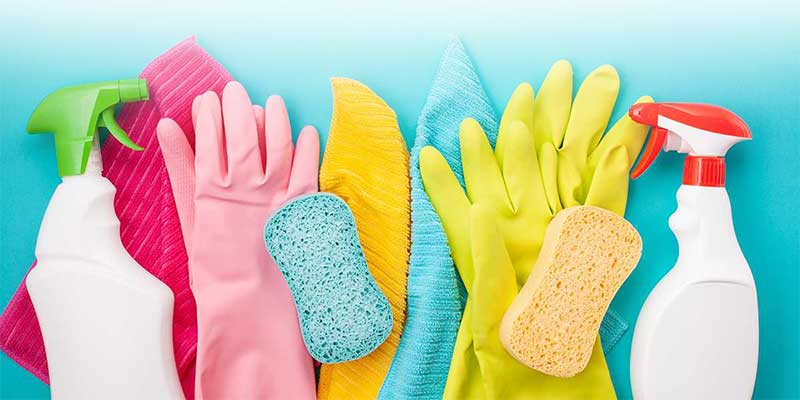The packaging of cleanliness
Market data, facts and types of packaging for household cleaning products. Analysis 2020 and first forecasts 2021.
Barbara Iascone
Istituto Italiano Imballaggio
This analysis examines the domestic detergent sector, the sector of products for cleaning, maintenance and hygiene of the environment, which, according to the classification proposed by Assocasa (federchimica), is divided as follows: detergents, laundry soaps, washing aids, environmental disinfectants and pest control, waxes, car care products, environmental deodorants and products for cleaning and maintenance in general.

Cleaning: antidote to fear
Data from the latest 2020 annual report show how Italians, in the midst of a pandemic and lockdown, have given vent to the impulse to clean their homes.
The numbers are very clear: thanks to forced confinement, but also to the fear of the virus, household cleaning products have grown both in value and quantity.
In terms of turnover, the sector grew by around 8% compared to the previous year. Products that had a very positive input were washing aids (+8%) and detergents (+5%), where disinfectant products performed best.
Dishwasher products also grew (+20%), with the increase attributable to the massive purchase of dishwashers (in Italy sales here grew by 2.7%).
On the other hand, a negative trend was registered in the laundry compartment, where detergents in this category fell by around 4%.
Evaluating the sector from a quantitative point of view, in 2020 ISTAT reports a 10% increase in production (1,857,000 tons); foreign trade closes the year with imports substantially stable (-0.1%) and exports growing (+6.8%).
In 2020, apparent consumption exceeded 943,000 tons, and it appears that not only exports absorbed production but also the growth of domestic consumption.
In such a peculiar year, the household cleaning sector is undoubtedly one of the areas that, on the whole, has been able to “breathe a sigh of relief”, registering positive trends in both volumes and turnover: the exponential recourse to disinfection, both at home and in areas of public access, has contributed to the positive trend of the sector.
If we restrict the analysis to the months relating to the lockdown only, what has been defined as the “prevention and health” effect was recorded, leading in March, April and May 2020 to the following trends: surface cleaners (+43.6%), gloves (+128.3%), solid and liquid hand soap (+57.5%), bleach (+49.5%), denatured alcohol (+154.0%), wipes (+82.5%). Over the course of the year, trends obviously contracted, returning to more contained rates.
As far as distribution is concerned, 60% of sales took place in supermarkets and drugstores, which registered growth of 8.2% and 11.5% respectively. Sales in hypermarkets were down (-2.2) and online sales also grew.
| 2019 | 2020 | var 20/19 | Ip. 2021 | var 21/20 | |
|---|---|---|---|---|---|
| Production | 1,687,280 | 1,857,149 | 10.1% | 1,985,298 | 6.9% |
| Import | 648,725 | 648,076 | -0.1% | 583,269 | -10.0% |
| Export | 1,471,618 | 1,571,688 | 6.8% | 1,681,706 | 7.0% |
| Consumption | 864,387 | 933,537 | 8.0% | 886,861 | -5.0% |
Source: Istat
Types of packaging
In the household detergents sector, plastic packaging, whether rigid or flexible, continues to dominate: the shifts in market share recorded in 2020 were essentially influenced by the greater use of one product rather than another.
The use of detergents and disinfectants has favoured the growth in market share attributable to rigid plastic packaging over, for example, metal packaging.
Globally, plastic packaging has grown at an annual rate of 4.8% over the past decade, with a significant increase in the use of recycled plastics.
Recycled plastics and bioplastics are finding more and more space in the detergent sector, thanks to the increasing attention to the sustainability of both the product and the packaging.
Analyzing the numbers from the Istituto Italiano Imballaggio database, the packaging mix (primary packaging) shows the following.
| 2019 | 2021 hypothesis | |
|---|---|---|
| Metal spraycan | 1.5% | 1.2% |
| Plastic wraps | 1.0% | 0.6% |
| Cardboard boxes | 4.0% | 4.0% |
| Plastic flacons | 66.5% | 66.5% |
| Polylaminate converter flexibles | 24.0% | 25.0% |
| Flexible plastic tubes | 1.0% | 0.6% |
| BriCk | 0.3% | 0.2% |
| Vending machines | 0.2% | 0.1% |
| Biodegradable refill packs | 1.5% | 1.8% |
| 100,00% | 100,00% |
The primacy of plastic
In 2020, plastic packaging in its totality covers 94% of the packaging of cleaning and maintenance products, a percentage that has been constant for some years now. Included in this percentage are packages made of biodegradable plastic, which are constantly growing.
Specifically we find:
- plastic bottles and flacons, which represent 66.5%, a constant share now for many years that has only seen deviations in favor of plastics from recycling compared to virgin ones. In 2020 there was a very slight increase due to the better performance of some products that use exclusively or prevalently plastic packaging;
- containers made of converter flexible laminated material, which continue to grow and in 2020 will reach 24% of total packaging in the sector (further growth is assumed in 2021);
- refills for detergent bottles made of biodegradable plastic material (which are added to the family of plastic packaging) and are growing steadily (in 2020 they reached 1.5% of the total packaging mix). This last type of packaging, in particular, is intended for concentrated products which, dissolved inside a bottle, release what is necessary to reconstitute the original detergent or cleanser. Even for this type of packaging, but above all of product, a further increase is expected in 2021;
- wrappers used for soaps in pieces (1%) and tubes (1%).
Other materials
The remaining 6% of the sector’s packaging is composed of:
- cardboard cases, used mostly for powder products and dishwasher tabs, which remain steady at 4% in 2020;
- metal spray cans (now almost exclusively in steel to the detriment of aluminium) which stand at 1.5%;
- paper-predominant rigid coupled containers 0.3%, down from 2019;
- the remaining 0.2% is represented by the category of vending machines for loose products, a phenomenon that has not taken root in Italy as it has in other countries and has gradually decreased over the years.
Secondary and transport packaging, cardboard or corrugated cardboard boxes, the latter in continuous and constant increase thanks above all to the development of online sales, shrink film and pallets are also of considerable importance.
In 2020, about 177,000 tons of packaging was used to package, store and transport household cleaning products, hence including primary packaging, accessories, secondary packaging, transport and protection packaging (over 74,000 tons are attributable to plastic packaging).
In terms of value, plastic packaging accounts for over 90% of the packaging used in this sector, 7% refers to paper, and the remaining 3% refers to metal packaging.
Detergents, in the first months of 2021
On the basis of an analysis of the data for the first 7 months of the year, the evolutionary hypotheses for 2021 see a return to the trends already consolidated in the past. Consumption will inevitably decrease, returning, as will happen in many sectors, to pre-pandemic levels. Production will be increasingly oriented towards exports, and it is assumed that imports will drop by about 10%.





















